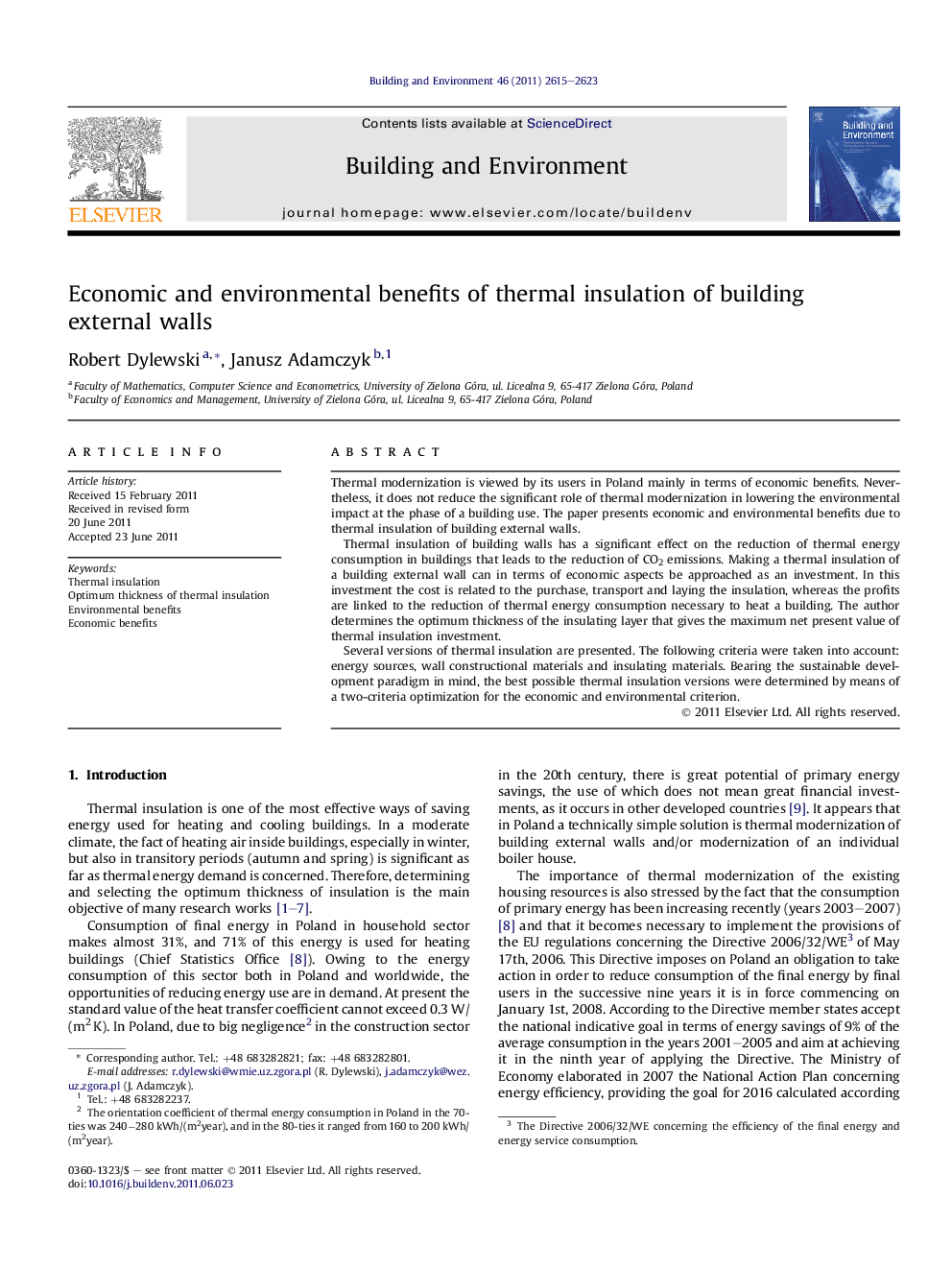| Article ID | Journal | Published Year | Pages | File Type |
|---|---|---|---|---|
| 248685 | Building and Environment | 2011 | 9 Pages |
Thermal modernization is viewed by its users in Poland mainly in terms of economic benefits. Nevertheless, it does not reduce the significant role of thermal modernization in lowering the environmental impact at the phase of a building use. The paper presents economic and environmental benefits due to thermal insulation of building external walls.Thermal insulation of building walls has a significant effect on the reduction of thermal energy consumption in buildings that leads to the reduction of CO2 emissions. Making a thermal insulation of a building external wall can in terms of economic aspects be approached as an investment. In this investment the cost is related to the purchase, transport and laying the insulation, whereas the profits are linked to the reduction of thermal energy consumption necessary to heat a building. The author determines the optimum thickness of the insulating layer that gives the maximum net present value of thermal insulation investment.Several versions of thermal insulation are presented. The following criteria were taken into account: energy sources, wall constructional materials and insulating materials. Bearing the sustainable development paradigm in mind, the best possible thermal insulation versions were determined by means of a two-criteria optimization for the economic and environmental criterion.
► We determine the optimum thickness of the insulating layer for building walls. ► We present economic benefits due to thermal insulation with the use of NPV. ► We determine benefits for environment with the use of LCA. ► The best results are obtained by insulation made of polystyrene foam or ecofibre.
